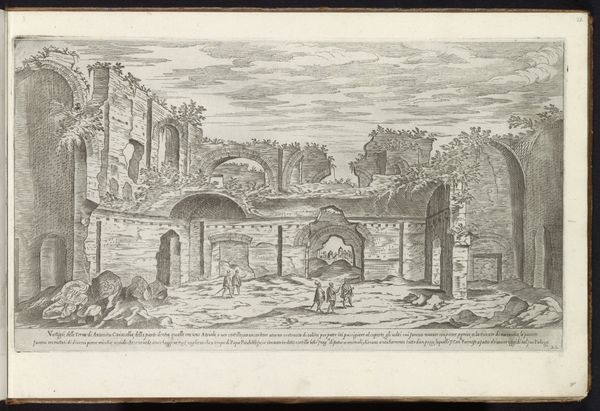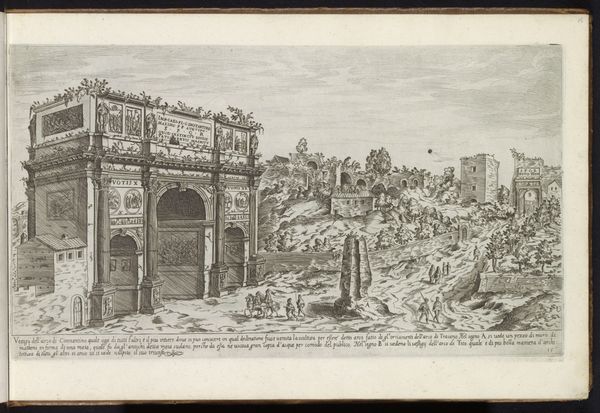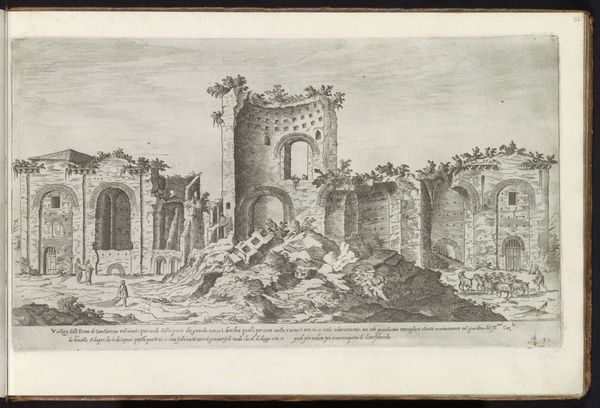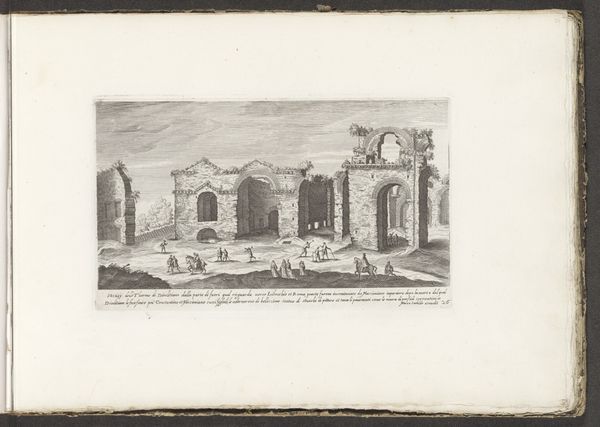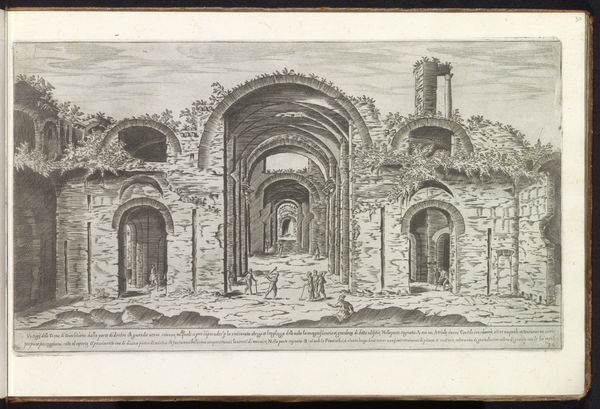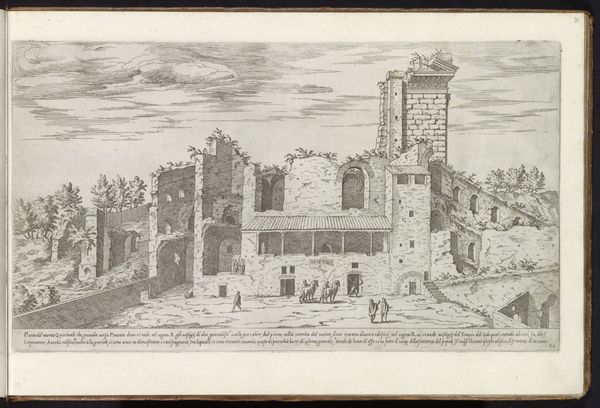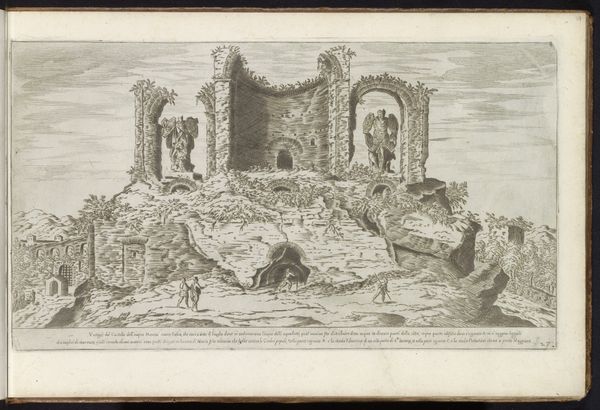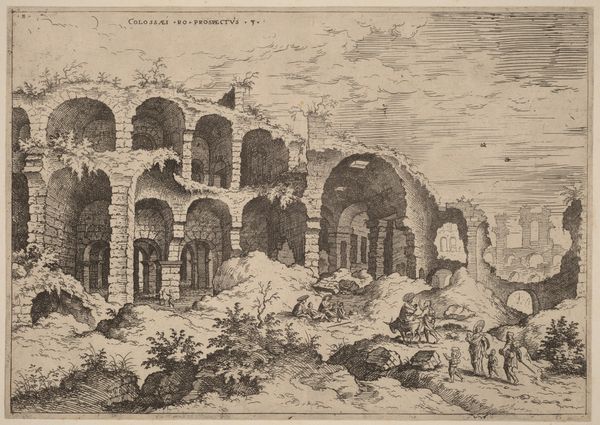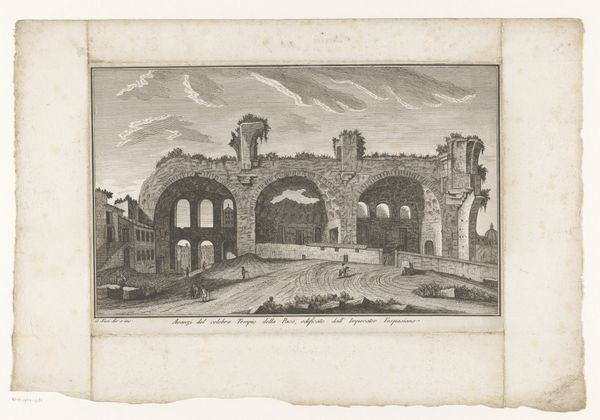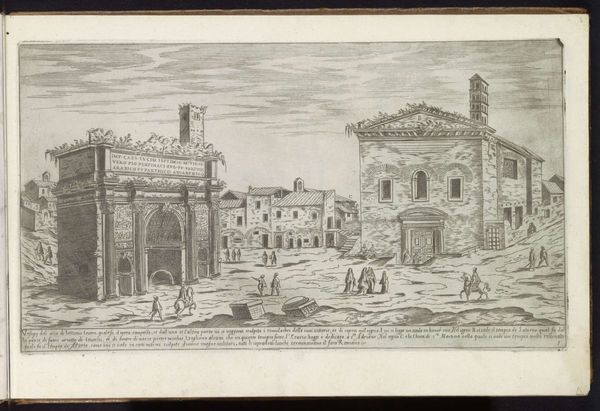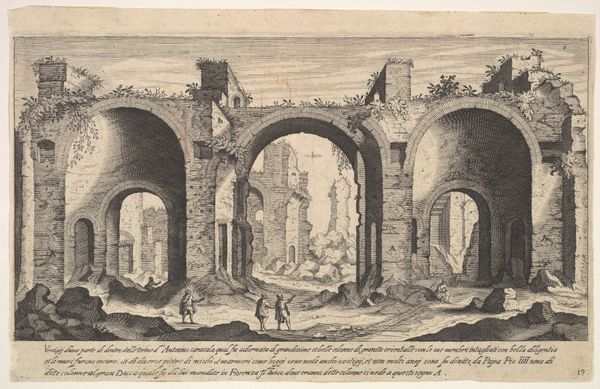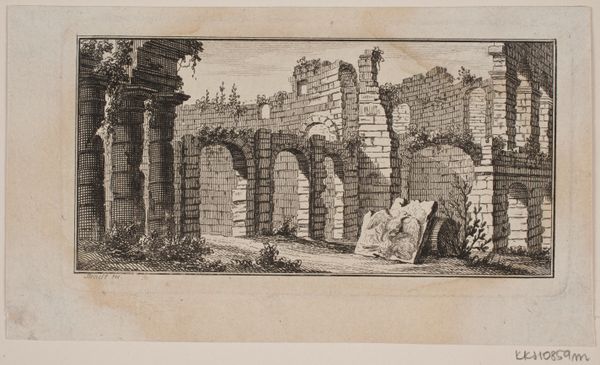
drawing, print, ink, engraving
#
drawing
#
ink drawing
# print
#
pen sketch
#
perspective
#
form
#
11_renaissance
#
ink
#
line
#
cityscape
#
history-painting
#
engraving
Dimensions: height 215 mm, width 381 mm
Copyright: Rijks Museum: Open Domain
Editor: Here we have Étienne Dupérac’s “Thermen van Diocletianus te Rome,” made around 1575. It’s an engraving, depicting what I presume are the ruins of the Baths of Diocletian. I'm immediately struck by the contrast between the detailed architecture and the somewhat whimsical depiction of the figures in the foreground. What draws your eye in this print? Curator: It is the interplay of lines. Notice how Dupérac masterfully uses the density and direction of the lines to create a sense of depth and volume in the ruins. The hatching and cross-hatching define the texture of the stone and suggest the play of light across the surfaces. The perspective, while not perfectly accurate, contributes to the overall structure and organization of the forms. Editor: So, the essence is in how he uses line to define the forms? Curator: Precisely. The strength of this piece resides not so much in its historical accuracy or narrative content, but rather in its formal qualities. How the artist organizes line, tone, and perspective to convey space and architectural form. Do you see how the regularity of the arches contrasts with the looser rendering of the figures, and what effect that produces? Editor: I see what you mean. The ruins are very structured, while the people are more freely drawn. Maybe it emphasizes the permanence of architecture versus the fleeting nature of human life? Curator: Perhaps. Consider too how the line varies. Think about the precision with which the architectural details are rendered, versus the comparatively sketchier treatment of the figures populating the space. Does the contrast between precise lines versus loose lines evoke different ideas about form? Editor: It gives the architecture a sense of monumentality, like it exists on a different plane from the people bustling around. It feels less real. That is interesting. Curator: Exactly! That’s the power of formal analysis: By focusing on these fundamental artistic elements, we can decipher layers of meaning and intention embedded within the work. Editor: I never thought about line that way, as more than just an outline. Thanks for your insights. Curator: It’s a testament to the power of observation, to see beyond the subject and into the structural bones of the artwork.
Comments
No comments
Be the first to comment and join the conversation on the ultimate creative platform.

